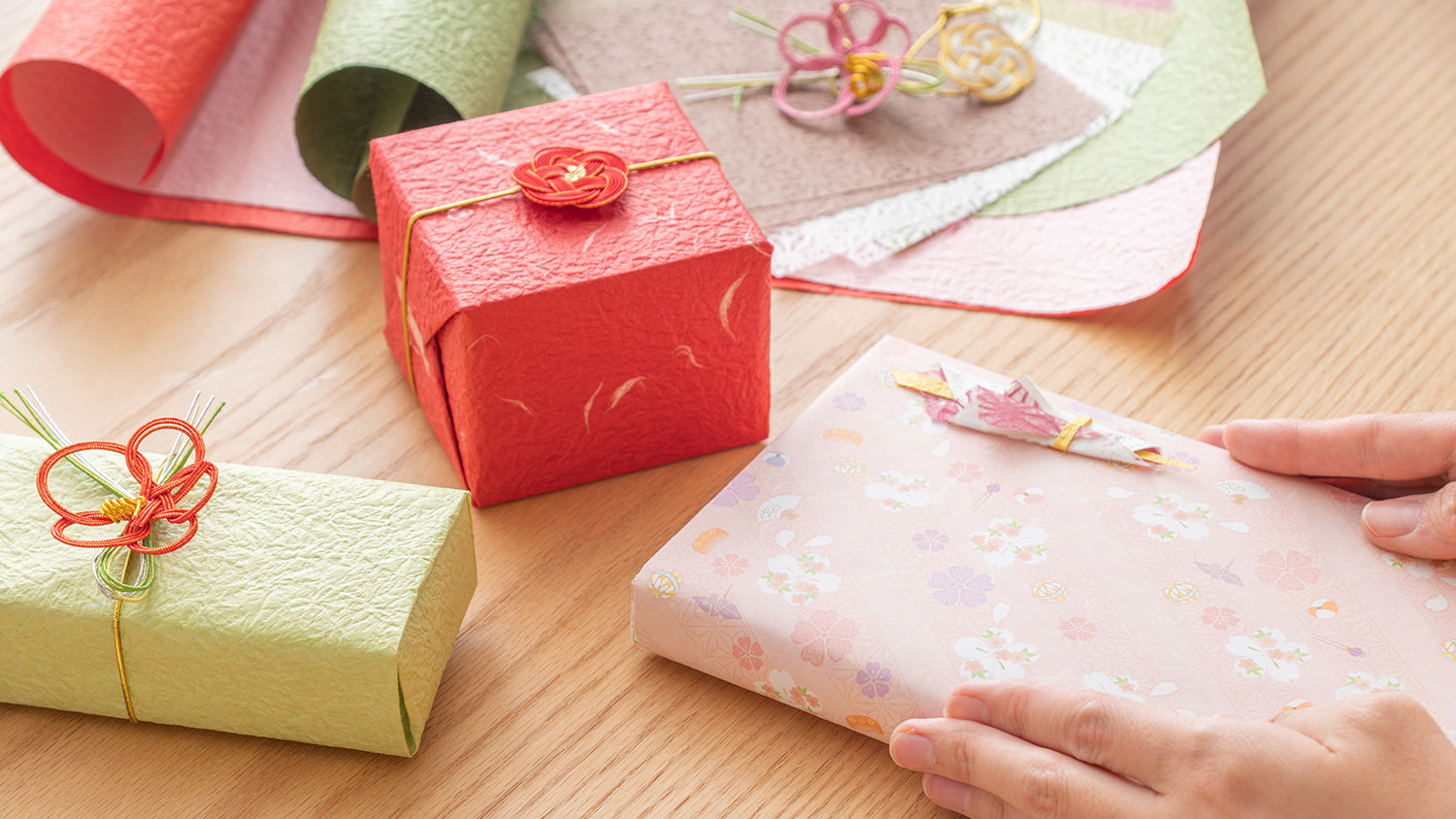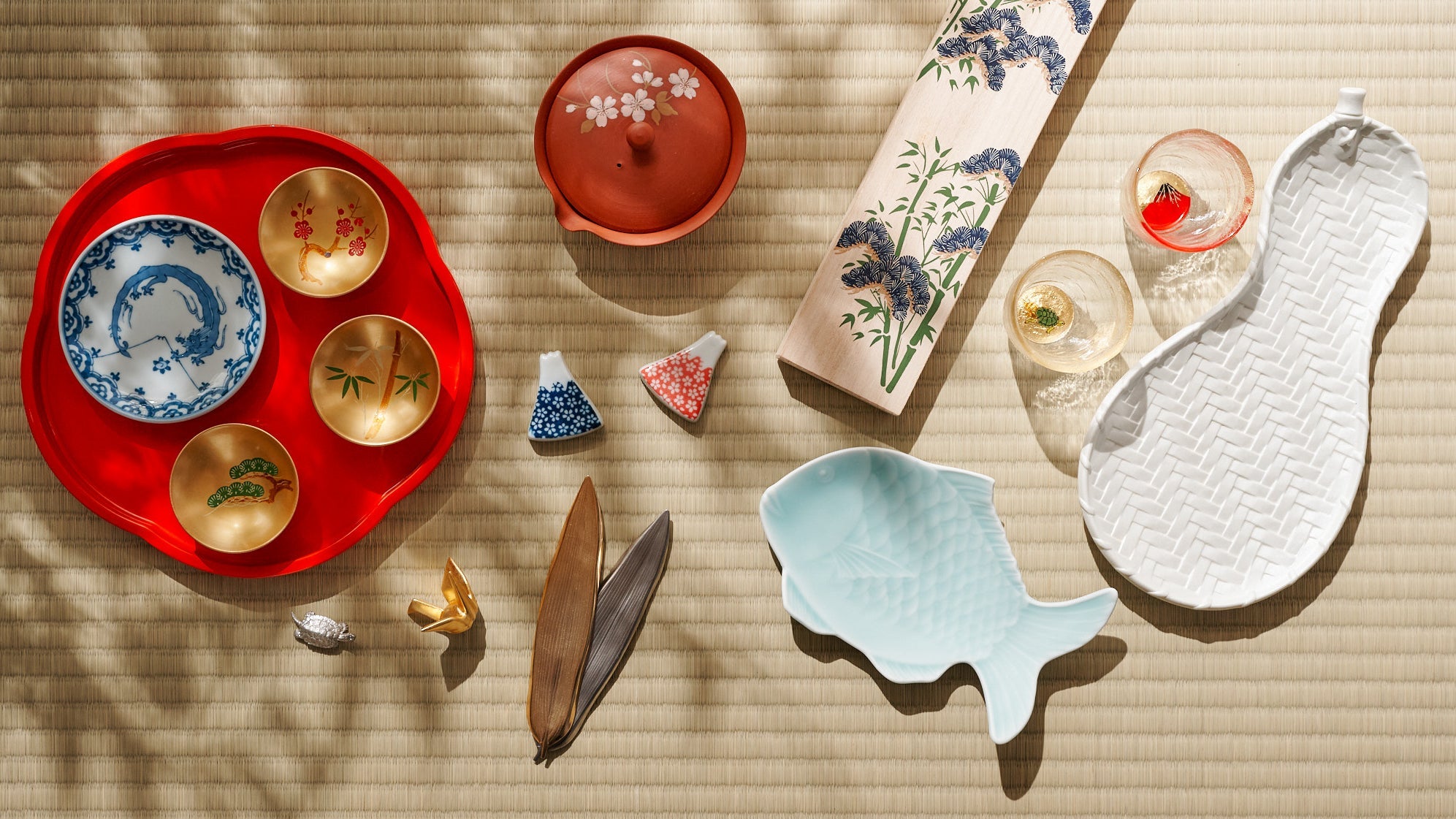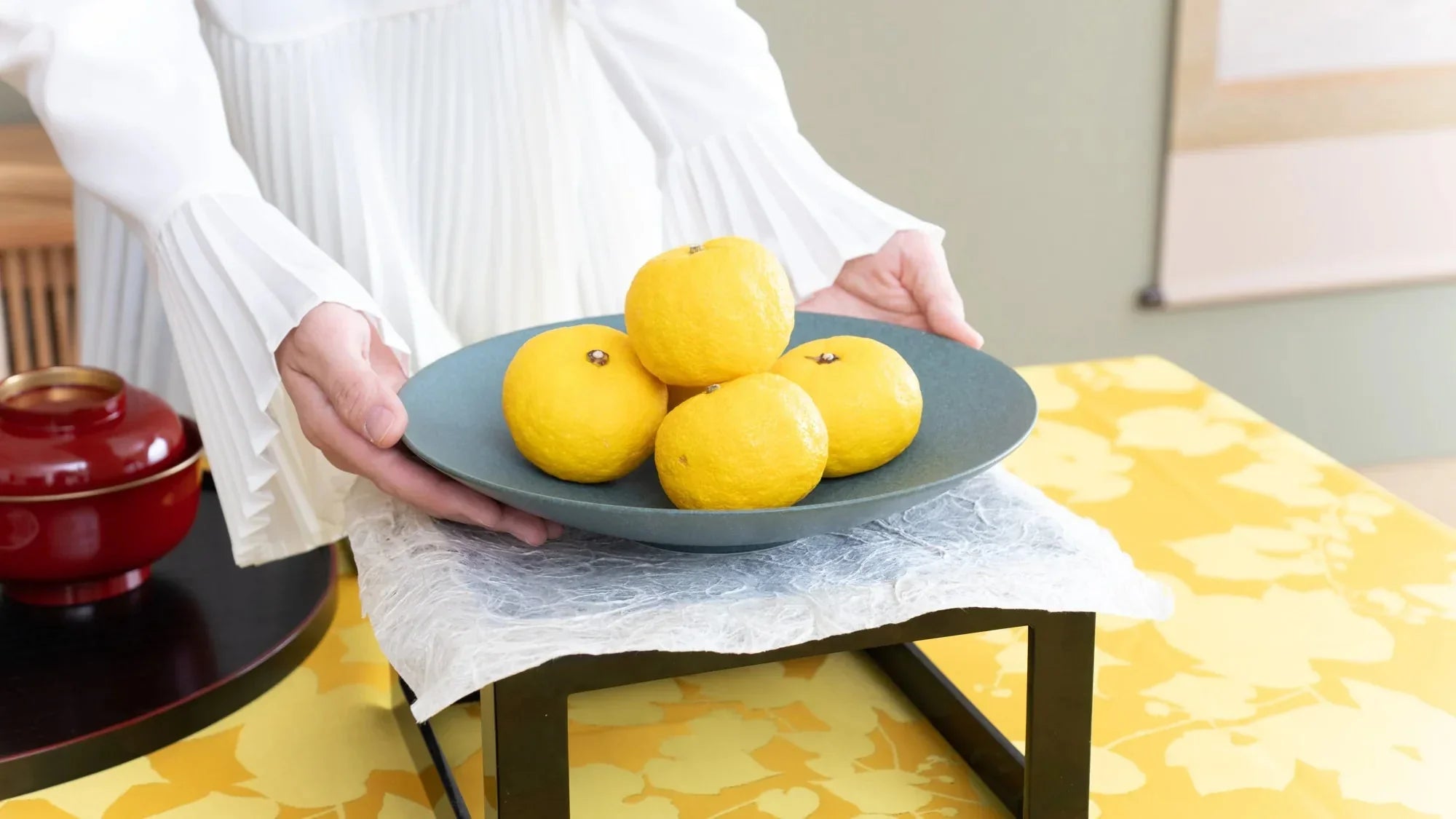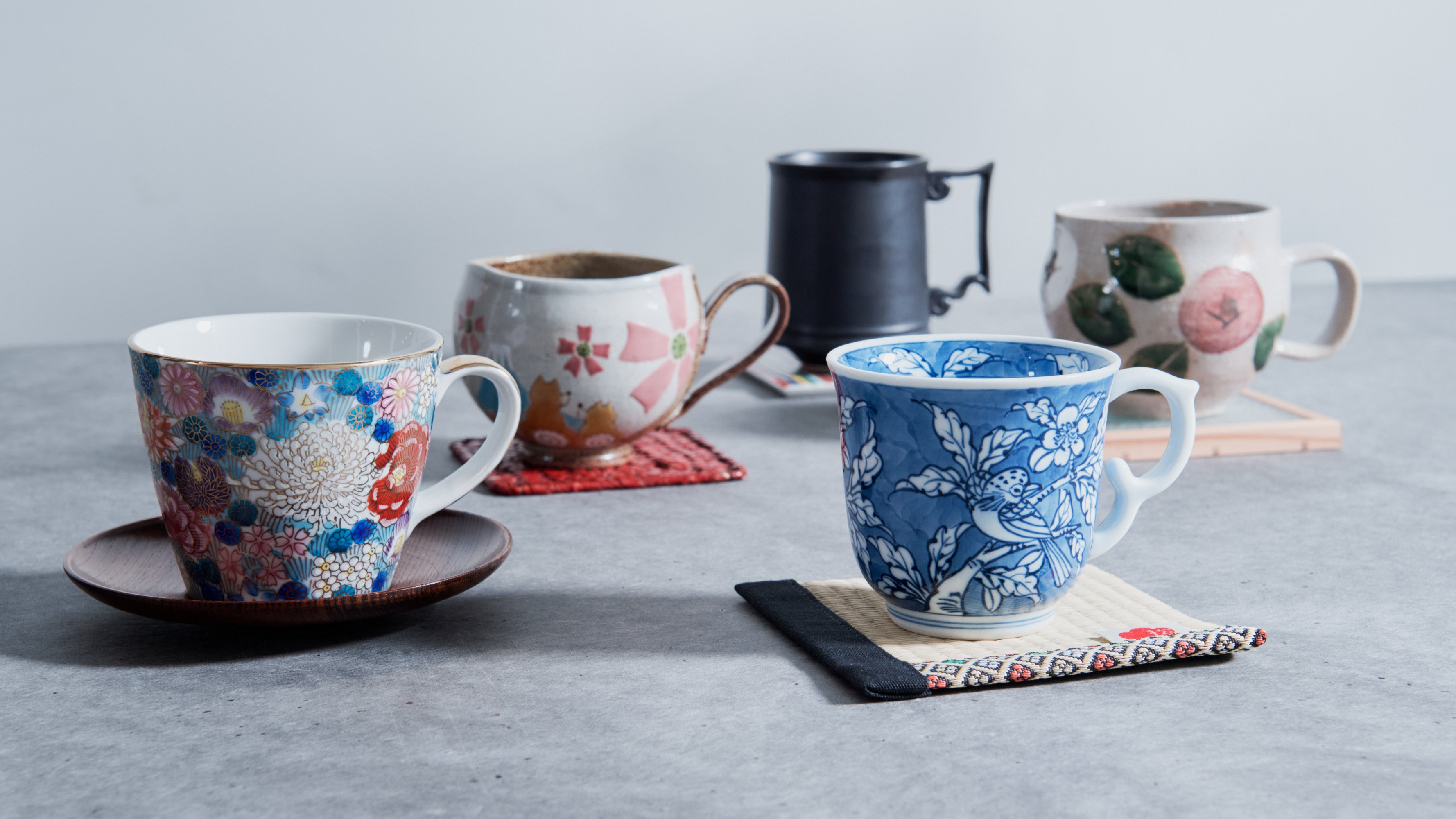
Japanese Urushi Lacquerware: A Legacy of Beauty and Craft
Written by Team MUSUBI
In Japanese dining culture, it’s customary to hold dishes in your hands as you eat, a subtle but meaningful gesture that reflects both etiquette and practicality. Among traditional Japanese tableware, there are two primary categories: ceramics and lacquerware. When it comes to handling hot dishes, however, lacquerware, crafted from insulating wood, is often the more comfortable choice.
Lacquerware isn’t just functional. Compared to ceramics, it is lighter, easier to hold, and aesthetically more versatile. Black lacquerware in particular has a special allure: its deep, glossy surface frames the colors of the food it holds, enhancing their appeal and making each dish feel more delicious, more intentional.

What gives lacquerware its unique character is urushi—a natural lacquer harvested from the sap of trees. Applied to wooden bases, this remarkable material is resistant to heat, moisture, and acids. It also offers protection against rot and insect damage, which is why, historically, urushi was first used not for beauty, but for durability. Over time, however, its rich sheen and smooth texture became prized in their own right, giving rise to a tradition that balances function with refined visual elegance.
As its uses expanded, urushi lacquer began to appear far beyond tableware. From furniture and interior décor to stationery, fashion accessories, and even architecture, the reach of this ancient craft grew ever wider.
In this article, we’ll explore the fascinating history of urushi lacquer in Japan and uncover what lies behind the timeless beauty of Japanese lacquerware, treasured both at home and abroad.
Table of contents
What Exactly Is Urushi?
Urushi is a traditional craft material made from the sap of the urushi tree (Toxicodendron vernicifluum), a deciduous broadleaf species that typically grows to a height of 26.2 to 32.8 feet (8 to 10 meters).
The primary component of urushi is urushiol, which undergoes a hardening process through enzymatic oxidation, specifically via the enzyme laccase, when exposed to warm, humid conditions (around 68–86°F/ 20–30°C and 60–80% humidity). Once cured, it forms a tough, resilient coating that is remarkably resistant to water, heat, and chemical degradation. These unique properties have made urushi invaluable not only as a natural lacquer but also as an adhesive in a variety of traditional applications.

While related trees grow across East and Southeast Asia, including China, Korea, Vietnam, and Thailand, the chemical makeup of the sap varies by region. Japanese urushi is known for its exceptionally high urushiol content, which gives it superior durability and luster. However, domestic production has steadily declined, driven down by the availability of inexpensive imported lacquer. Today, more than 90% of the urushi used in Japan is sourced from abroad, with only a small fraction being domestically produced.
Despite this, the cultivation of Japanese urushi and its use in traditional crafts remain deeply rooted in Japan’s cultural and artistic heritage. Recognizing its significance, Japan’s Agency for Cultural Affairs announced in 2015 that domestically produced urushi should, in principle, be used for the restoration of National Treasures and Important Cultural Properties. Since then, efforts to revive and stabilize domestic urushi production have been gaining momentum, as part of a broader movement to preserve and pass on Japan’s cultural legacy to future generations.
The History of Urushi and Lacquerware Craft in Japan
The use of urushi lacquer in Japan stretches back nearly 9,000 years to the Jomon period (c. 14,000–300 BCE).

Some of the earliest known examples were discovered in Hakodate, Hokkaido, where lacquered pottery fragments dating from that era have been unearthed. Similar finds, including lacquered haniwa (clay figures used in burial rituals, depicting humans, animals, or objects), personal ornaments, bamboo containers, and wooden bowls, have surfaced at other archaeological sites from the same period. In early agrarian societies, urushi was commonly applied to tools and household items primarily to reinforce their durability. The fact that traces of lacquer from such ancient times remain intact today is a powerful testament to its exceptional resilience.
From the late 6th to 7th centuries, during the Asuka period (c. 538–710 CE), Japan began shaping a centralized nation under imperial rule and absorbing cultural influences from the Asian mainland, especially China. During this time, urushi was no longer confined to practical tools; it began to appear in religious architecture, Buddhist statues, and ritual implements. This shift marked the beginning of its artistic evolution. As demand grew, so did urushi production, and lacquer cultivation and craftsmanship flourished across the country. Techniques advanced rapidly, both in how lacquer was applied and how it was used decoratively. At the same time, urushi came to be used not only as a coating material but also as an adhesive for attaching decorative elements to buildings and furnishings.

For a time, lacquerware remained largely exclusive to the elite—nobles, monks, and the educated classes. It adorned their tableware, furnishings, and objects of daily life, all of which were crafted to the highest standards and valued as luxury goods. That changed during the Kamakura period (1185–1333 CE), when simplified production methods allowed for faster, more affordable manufacturing. As prices fell, lacquerware entered the homes of common people, becoming a familiar part of daily life across all social classes—a role it continues to play in Japan today.
In the Edo period (1603–1868 CE), regional domains actively supported lacquer production as a local industry. This gave rise to many distinct styles that are still celebrated today, including Tsugaru-nuri (Aomori Prefecture), Hidehira-nuri (Iwate Prefecture), Wajima-nuri (Ishikawa Prefecture), Wakasa-nuri (Fukui Prefecture), Shunkei-nuri (Gifu Prefecture), and Kagawa Shikki (Kagawa Prefecture).
These regional styles reflect centuries of local innovation, and many are still crafted by hand. One of the enduring appeals of lacquerware, beyond its visual depth and durability, is the way it feels in use: warm to the touch, smooth against the lips, and subtly soft in the hand. This quiet intimacy is part of what makes urushi such an inseparable part of Japanese life and aesthetics.
Expert Harvesting and Careful Refinement: The Key to High-Quality Urushi
In Japan, the process of collecting sap from the urushi tree is known as urushi-kaki. It involves making precise incisions in the tree trunk using specialized blades, then gently scraping off the sap that seeps out naturally with a flat spatula-like tool.
To harvest high-quality sap, this process must follow strict rules and advanced skill. The angle and depth of each cut, as well as the technique used to gather the sap, directly affect both its quality and the amount that can be collected. Tools must also be selected and adjusted based on the condition of the tree and its growing environment. Every seasoned harvester relies on methods honed through years of trial and error, often developing a highly individual approach to the craft.
The raw sap gathered this way contains impurities such as bits of bark, dust, and other natural debris, making it unsuitable for immediate use. Before it can be applied as lacquer, it must first undergo a careful purification process, following a series of precise steps.
The Refinement Process: Turning Raw Sap into Usable Urushi

Filtration
First, the raw sap is gently heated to improve its fluidity, then passed through cloth or other filters to remove impurities. This initial stage produces ki-urushi. In recent years, centrifugal separators have also become common tools for this step.
Nayashi and Kurome
The next stages focus on refining the lacquer's texture and performance.
Nayashi involves stirring the ki-urushi to evenly distribute its components and break down any coarse particles. This process enhances the smoothness, gloss, and thickness of the lacquer film once applied.
Kurome follows, in which the lacquer is stirred again while being gently heated. This further improves its clarity and adjusts critical properties such as viscosity, drying time, and overall finish. Today, it is not uncommon for nayashi and kurome to be performed simultaneously, depending on the intended use.
The result of this process is suki-urushi, a clear, light amber lacquer.
Transforming the sap of the urushi tree into high-quality lacquer requires many careful steps and painstaking effort.
The Undersurface: Essential Groundwork for Durable, Beautiful Lacquerware
As previously mentioned, one of the defining features of Japanese lacquerware is its remarkable durability. This resilience is due not only to the inherent strength of urushi itself, but also to the meticulous preparation that underpins its creation. Most lacquerware begins with a wooden base—called a kiji—onto which several layers of lacquer are applied. But before these top layers can be added, a foundation must be built: this is known as shitaji-zukuri, or base preparation, and it plays a crucial role in both the longevity and aesthetic finish of the final product.
There are several traditional methods for creating this base layer, including the following:
Hon-kataji
This method involves mixing jinoko, a fine powder made by firing and grinding clay or volcanic ash, or powdered tonoko (whetstone) with water and raw urushi. The mixture is applied using a spatula, then allowed to dry, and is polished before repeating the process. The more layers applied and polished, the more robust the foundation becomes.
In Wajima-nuri, a lacquerware tradition from Ishikawa Prefecture, extra care is taken to reinforce areas especially prone to chipping, such as the koen (lip) or the kodai (foot) of a bowl. Cloth is affixed to these parts, a technique known as nunokise, before applying the base layers. Another unique feature of Wajima-nuri is the use of jinoko made from locally sourced diatomaceous earth, which adds further structural strength.

Honji
In this method, jinoko or tonoko is mixed directly with raw urushi, without any added water. Because no moisture is used, the resulting base becomes even harder once fully dried.
Makiji
Here, raw urushi is brushed directly onto the wooden surface. While the lacquer is still wet, jinoko is sprinkled evenly across it using a brush. This process is repeated several times, typically three, with the powder becoming progressively finer in each stage. Finally, a coat of raw urushi is applied to seal the layer and bind the powder in place.
In addition to reinforcing the wooden base, shitaji-zukuri also plays a critical role in evening out surface imperfections such as small dents or scratches. This makes the surface smoother and better suited for subsequent coats of lacquer, ultimately contributing to a cleaner, more polished finish.

The Art of Lacquer Application and Its Many Expressions
Once the base layers have been prepared, the lacquerware begins to take shape through a series of meticulous coating stages. These applications are typically divided into three phases: the shita-nuri (base coat), the naka-nuri (middle coat), and the uwa-nuri (final top coat).
After each layer is applied, the piece is placed in a controlled environment known as a furo—a special lacquer-drying cabinet or chamber—where the temperature and humidity are carefully maintained (around 68–86ºF / 20–30°C and 60–80% humidity). Under these conditions, the lacquer hardens naturally before the next layer is added.
Once the final top coat has been applied, there are two primary approaches to finishing. One is nuritate, in which the piece is left as-is after the last layer, resulting in a soft, natural luster. The other is roiro-nuri, a more refined technique where the surface is polished with charcoal to achieve a deep, mirror-like gloss.
The way urushi is applied, layered, cured, and finished has a profound effect on the color, luster, and overall feel of the finished piece. Below, we’ll take a closer look at some of the most representative and celebrated techniques.
Kuro-nuri (Black Lacquer)
This finish uses kuro-urushi, black lacquer pigmented with iron hydroxide. When oil is added to the lacquer, the result is a glossy, reflective surface. Without oil, the finish becomes matte and understated.
Shu-nuri (Vermilion Lacquer)
This bright red lacquer is made by mixing suki-urushi (transparent lacquer) with cinnabar (mercury sulfide) or red iron oxide. The resulting shu-urushi creates a rich, vibrant vermilion coating.
Negoro-nuri
In this method, vermilion lacquer is layered over a black lacquer base. As the piece ages and wears with use, the red lacquer gradually reveals the black beneath—an effect that deepens over time. The technique is believed to have originated between the 13th and 16th centuries at Negoro-ji, a Buddhist temple in Wakayama Prefecture.
Tame-nuri (Pooled Lacquer)
This finish involves applying transparent lacquer over a red-lacquered surface or directly onto a wooden base with visible grain. The result is a luminous, amber-like translucency. Where the lacquer layer is thinner, such as along the rim of a bowl or the edges of a tiered box, the underlying color shows through more clearly.
Mehajiki-nuri (Grain-Preserving Lacquer)
Here, the surface is left unsealed—no base layers are applied—so the lacquer is brushed directly onto bare wood. This technique highlights the natural grooves and uneven texture of the wood grain, preserving a soft, organic surface appearance.
Shunkei-nuri
Named after a craftsman thought to have worked in southern Osaka during the Muromachi period (1336–1573 CE), this method begins by dyeing the wooden base in shades of yellow or red. Transparent lacquer is then applied over the surface, resulting in a warm-toned finish that enhances and preserves the natural wood grain.
Fuki-urushi (Wiped Lacquer)
Also known as suri-urushi, this method involves rubbing raw lacquer directly into the wood with a brush or cloth. Once dried, the surface is wiped and polished with washi paper or fabric. Repeating this process creates a rich, lustrous sheen that accentuates the wood’s texture and pattern.
In recent years, traditional black and vermilion lacquers have been joined by a far wider spectrum of hues. By adding various pigments to refined suki-urushi mixed with oil, modern craftsmen have developed over 50 shades of iro-urushi, including yellow, green, blue, purple, pink, beige, and many more.
Decorative Techniques in Japanese Lacquerware
Urushi possesses a versatility that allows it to function not only as a coating material but also as a pigment and adhesive. Leveraging these qualities, Japanese artisans developed an array of surface decoration techniques, known as kashoku, which are applied to pre-lacquered objects such as bowls, boxes, and trays. These techniques add visual richness and lend lacquerware a heightened sense of artistic expression.
The following are some of the most representative decorative methods used in traditional Japanese lacquerware.
Maki-e

Maki-e, literally “sprinkled picture,” is a decorative technique unique to Japan. Designs are first painted onto a lacquered surface using fresh urushi. Before the lacquer dries, gold, silver, or colored metallic powders (finely ground pigments) are sprinkled over the design. The powders are then sealed with additional lacquer and polished to reveal the final image.
There are numerous variations of this technique. In togidashi maki-e (polished-out maki-e), the metallic powders are first embedded in lacquer, which is then coated with additional layers. Once fully cured, the surface is polished with charcoal to expose the design, resulting in a smooth, integrated finish. Another type, taka maki-e (raised maki-e), involves first building up the design with lacquer or other materials to create a three-dimensional relief, onto which metallic powders are applied and polished.
Because even the slightest imperfections, such as surface bumps or tiny indentations, can affect the clarity and precision of the final design, maki-e demands meticulous groundwork and flawless lacquering beforehand.
Chinkin

Often associated with Wajima lacquerware, chinkin is a technique in which fine patterns are carved into a surface coated with multiple layers of black lacquer. Using a sharp blade, the artisan engraves narrow grooves into the hardened lacquer. Raw urushi is then applied across the entire surface and wiped away, leaving only the grooves filled. Gold leaf or gold powder is rubbed into these incisions, creating elegant, precise designs that shimmer against the dark background.
Raden and Rankaku
Raden involves inlaying or affixing thin pieces of shell—typically from luminous sources like turban shells, abalone, or pearl oysters—onto the lacquer surface. These slivers, taken from the nacreous interior of the shells, are cut into delicate motifs or geometric patterns and adhered with lacquer, producing a softly iridescent effect.
Rankaku, literally “eggshell,” is a technique that uses broken quail or chicken eggshells. The fragments are applied to the surface with lacquer, coated again to fix them in place, and then carefully polished. Because eggshell is naturally white, rankaku allows for decorative expressions in pure white—something difficult to achieve using urushi alone.
Urushi-e
In this method, lacquer is mixed with pigments to create colored urushi in hues such as red, black, green, purple, or blue. These colored lacquers are then used like traditional paints, applied by brush to draw decorative patterns or pictorial imagery directly onto the surface of the object.
Haku-e
Haku-e involves painting a motif in lacquer onto the surface, then applying sheets of gold or silver leaf over it. Once the lacquer dries, the excess metal leaf is removed, revealing the design beneath. In some regional styles, such as Hidehira-nuri from Iwate Prefecture, artisans pre-cut gold and silver leaf into shapes like triangles, diamonds, or rectangular strips and arrange them to form geometric patterns, adding a structural rhythm to the decoration.
During the Age of Exploration, from the 15th to 17th centuries, European merchants who reached Japan became particularly fascinated by one decorative technique above all: maki-e, a uniquely Japanese art of sprinkling gold or silver powder onto wet lacquer to create intricate, luminous designs. Traders commissioned Kyoto artisans to apply maki-e to Western-style furnishings such as cabinets and decorative boxes. Lavish combinations of maki-e with raden, mother-of-pearl inlay, a technique still rare in Japan at the time, were sold at high prices in Spain and Portugal. These Japanese lacquerwares delighted not only aristocrats and royalty, including Queen Marie Antoinette of France, but also members of the Christian clergy across Europe.
Centuries later, in 2023, this tradition of cross-cultural admiration took on new life when a contemporary lacquer artist based in Kyoto, Asai Yasuhiro, had one of his works added to the collection of the British Museum. The piece, a modern incense burner, was adorned with both maki-e and raden, bridging centuries of craftsmanship and innovation.

The following year, in 2024, a diplomatic gift from the Japanese Prime Minister to former U.S. President Joe Biden and the First Lady further underscored the enduring significance of urushi. The items include a coffee cup and a fountain pen, were created by Taya Shikkiten, one of the most renowned makers of Wajima lacquerware. Both pieces were finished with maki-e detailing, representing not just Japanese artistry, but also its continued relevance and esteem abroad.

Though Japan’s lacquer tradition stretches back thousands of years, the people who sustain it today aren’t simply preserving it in amber.
In recent years, researchers and artisans have developed new types of urushi that can adhere to materials previously considered incompatible with traditional lacquerwork, such as glass and ceramics. Sprayable lacquers have also emerged, as have more weather-resistant formulations—varieties that stand up better to UV exposure, moisture, and the wear and tear of outdoor use.
These next-generation lacquers are beginning to inspire new possibilities in Japanese manufacturing and design. It’s only a matter of time before they lead to entirely new expressions of beauty—ones we may not yet be able to imagine.
And yet, despite these exciting innovations, lacquerware today feels increasingly absent from everyday life in Japan, at least outside the realm of tableware. Whether due to changes in lifestyle, convenience, or economics, urushi has grown less familiar in modern households.
So here’s a question worth asking: when a new generation of lacquerware finally arrives—shaped by the sensibilities of the future—who will recognize its value first? Will it be the people of Japan, or will eyes abroad be the first to see its quiet brilliance?

















Leave a comment
This site is protected by hCaptcha and the hCaptcha Privacy Policy and Terms of Service apply.